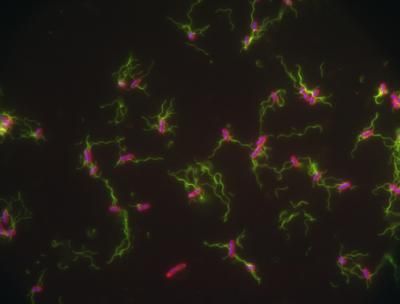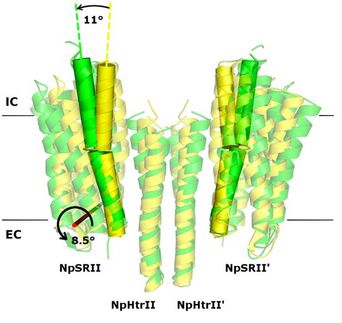How an artificial protein rescues dying cells
A new study from Princeton has revealed how a synthetic protein revives E. coli cells that lack a life-sustaining gene, offering insight into how life can adapt to survive and potentially be reinvented.
Researchers in the Hecht lab discovered the unexpected way in which a synthetic protein called SynSerB promotes the growth of cells that lack the natural SerB gene, which encodes an enzyme responsible for the last step in the production of the essential amino acid serine.
The Hecht group first discovered SynSerB's ability to rescue serine-depleted E. coli cells in 2011. At that time, they also discovered several other de novo proteins capable of rescuing the deletions of three other essential proteins in E. coli. "These are novel proteins that have never existed on Earth, and aren't related to anything on Earth yet they enable life to grow where it otherwise would not," said Michael Hecht, professor of chemistry at Princeton and corresponding author on the article.
Natural proteins are complex molecular machines constructed from a pool of twenty different amino acids. Typically they range from several dozen to several hundred amino acids in length. In principle, there are more possible protein sequences than atoms in the universe, but through evolution Nature has selected just a small fraction to carry out the cellular functions that make life possible.
"Those proteins must be really special," Hecht said. "The driving question was, 'Can we do that in the laboratory? Can we come up with non-natural sequences that are that special, from an enormous number of possibilities?"
To address this question, the Hecht lab developed a library of non-natural proteins guided by a concept called binary design. The idea was to narrow down the number of possible sequences by choosing from eleven select amino acids that were divided into two groups: polar and non-polar. By using only the polar or non-polar characteristics of those amino acids, the researchers could design a plethora of novel proteins to fold into a particular shape based on their affinity to and repulsion from water. Then, by allowing the specific positions to have different amino acids, the researchers were able to produce a diverse library of about one million proteins, each 102 amino acids long.
"We had to focus on certain subsets of proteins that we knew would fold and search there first for function," said Katie Digianantonio, a graduate student in the Hecht lab and first author on the paper. "It's like instead of searching the whole universe for life, we're looking in specific solar systems."
Having found several non-natural proteins that could rescue specific cell lines, this latest work details their investigation specifically into how SynSerB promotes cell growth. The most obvious explanation, that SynSerB simply catalyzed the same reaction performed by the deleted SerB gene, was discounted by an early experiment.
To discern SynSerB's mechanism among the multitude of complex biochemical pathways in the cell, the researchers turned to a technique called RNA sequencing. This technique allowed them to take a detailed snapshot of the serine-depleted E. Coli cells with and without their synthetic protein and compare the differences.
"Instead of guessing and checking, we wanted to look at the overall environment to see what was happening," Digianantonio said. The RNA sequencing experiment revealed that SynSerB induced overexpression of a protein called HisB, high levels of which have been shown to promote the key reaction normally performed by the missing gene. By enlisting the help of HisB, the non-natural protein was able to induce the production of serine, which ultimately allowed the cell to survive.
"Life is opportunistic. Some proteins are going to work by acting similarly to what they replaced and some will find another pathway," Hecht said. "Either way it's cool."




















































